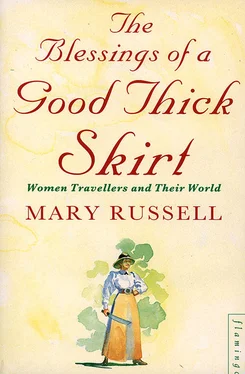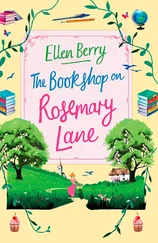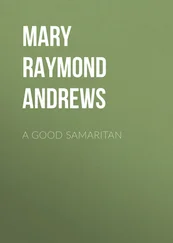Put them in a room together, and there is no guarantee that harmony will prevail. In the 1880s, when Marianne North and Constance Gordon Cumming accepted an invitation to meet Isabella Bird Bishop, their lion-hunting London hostess was overjoyed. ‘Three globe-trotteresses,’ she trilled, unwisely. The two were not especially amused. Isabella was decked out in gold-embroidered slippers, a silver and gold petticoat from Japan and was sporting a favour presented to her by the King of the Sandwich Islands. ‘We withdrew,’ said Miss North, somewhat loftily, ‘leaving Miss Bird unruffled and equal to the occasion.’
Miss Gordon Cumming, in fact, was not unlike the unruffled Isabella. Born into a wealthy Scottish family – her home was at Gordonstoun – she got her first glimpse of the outside world at the age of thirty-one when she received an invitation from her sister to visit her in India. Visit! She was amazed at the idea and almost turned it down since no one, she felt, went to India unless they had to. Yet on arrival, she was immediately captivated by its mystery and sense of history and especially by the similarities between Hindu and Celtic customs. After a two-year stay, she returned to England and wrote an ecstatic two-volume account of what she saw. A few years later, she received an invitation from the Bishop of Colombo to visit him in Ceylon and her reputation as a traveller began to grow. As soon as she got back home to England, people started asking her where next, to which she replied: ‘Fiji, because that was the most absolutely improbable idea that could suggest itself.’ But improbable or not, she went, and then on to Japan, Tahiti and San Francisco. Mistress of the throwaway line, her books – she wrote one about each journey – are littered with tantalizing phrases such as ‘our acquaintance with camels had hitherto been limited to the Arabian dromedary …’ An inquisitive, studious lady, she observed misery and poverty with compassion but from a distance and, in common with many travellers, she was not always around when her publishers needed her. In a foreword to one of her books, there is an apology for some inadequacy or other, explained by the telling phrase: ‘In the absence of the author, who sailed unexpectedly for Fiji …’ The proofs, on this occasion, were read by none other than the unruffled Miss Bird.
It is perhaps surprising that the paths of the travelling sisterhood did not cross more often, though had Fanny Workman met up with her contemporary, Gertrude Bell, the political sparks might well have turned into a conflagration. At the very time that Fanny was conducting a series of major climbing expeditions in the Karakorams, resolutely advertising the cause of women’s suffrage, Gertrude was helping to found, in England, the Anti-Suffrage League.
Both these women were products of their respective worlds, moulded and influenced by the whims, attitudes, needs and prejudices of those around them. Certain women have set out on their journeys happy not only to take the attitudes of society with them but also to impose them on those they have encountered along the way, whom they perceived to be in some way in need of improvement Others have found such values false and insufficient, and have felt compelled to go in search of qualities which they feel are lacking in the world they leave behind.
Whatever their needs and motivations have been, travelling has over the centuries offered to women a means both of discovering and expressing their own individuality, for the change in their needs has been one only of degree. Women, said a seventeenth-century writer, should stay at home and attend to their duties, which he kindly characterized as ‘subjection, helpfulness and gracefulness’. The tedium of such advice was unbearable. ‘The truth is,’ commented Margaret Lucas, flamboyant and eccentric Restoration writer, ‘we live like Bats or Owls, Labour like Beasts, and Dye like Worms.’
Three hundred years later, Sabina Shalom found herself fat, middle-aged and menopausal – and with a bee in her Miami Beach bonnet about hitch-hiking to Australia: ‘The idea obsessed me simply because it was right off the map. It became an excuse, not a reason, for getting away … I longed to be free of duties and obligations. Free of thinking, worrying, protecting, mothering. Free of feeling everyone’s burdens and making them mine.’
The distant horizon beckons even more urgently now, as the blandness of the mid-twentieth century threatens to render us anonymous, our identity emerging as symbols on a computer printout or fashioned as fodder for the consumer society, for the marketing and media world. Within this murderous matrix, women are tamed and packaged, their new ‘liberated’ image as steeplejacks, truck-drivers or soldiers glamourized, glitzy and unreal – suitable copy for the propaganda machine anxious to demonstrate society’s stifling generosity towards them. For those with the will to escape, a journey outwards into the unseen may be the only hope of finding what lies within. Better the reality of the unknown than the artificiality of the known.
CHAPTER 2 Pilgrims to Freedom
‘Nothing could hold her back, whether it was the labour of travelling the whole world … the perils of sea and rivers … the dread crags and fearsome mountains …’
Valerius on Egeria.
Travellers, like the rest of us, need to communicate with someone even if, by writing a journal, it is at one remove. In 1884 a remarkable book was discovered which tells of a journey made by a woman who travelled to Jerusalem around the year AD 383.
Its author, Egeria, was a devout Roman citizen of noble birth, who journeyed from Gaul to the Holy Land and recorded everything she saw, thus leaving us with both a fascinating traveller’s tale and the only complete account we still have of the fourth century liturgy. So timeless are some of these liturgical ceremonies that her description, written sixteen hundred years ago, captures that odd mixture of gloom and glitter, superstition and ritual that haunts the dark interiors of present-day Jerusalem: ‘All you can see is gold and jewels and silk; the hangings are entirely silk with gold stripes, the curtains the same and everything they use for services at the festival is made of gold and jewels. You simply cannot imagine the number and the sheer weight of the candles and the tapers and the lamps …’
Travelling through fourth-century Palestine was not without its dangers. Wild animals roamed the purple hills and the inhospitable locals, weary of seeing endless bands of well-to-do foreigners pass through their lands, were liable to attack without warning. It was a formidable undertaking for anyone, let alone a woman on her own, but as long as travellers stuck to the straight and narrow Roman roads, they were relatively safe.
By the time Egeria set out on her journey, the pilgrim way was well established. Monasteries dotted the route and quite a few hospices had been set up for the use of Christian travellers, many of whom, of course, were women. In fact, the hospices themselves were often run by women, among them Paula, a Roman matron whose business acumen and managerial skills led her to establish a chain of hospices. Her contemporary, the scholar Jerome, was amazed that a mere woman should be so successful: ‘With a zeal and courage unbelievable in a woman she forgot her sex and physical weakness and settled in the heat of Bethlehem for good in the company of many virgins and her daughter’ – whom we must charitably assume was one too.
These journeys were far from being temporary religious fads, indulged in by rich women with time on their hands. Egeria and Paula were followed by wave after wave of women who put down lasting roots in Jerusalem and refused to return home. A guide book written nearly four hundred years after Egeria’s arrival comments on the presence, just outside the East Gate of the Holy City, of a hundred women living in an enclosed convent, receiving gifts of food which were pushed through a hole in the wall.
Читать дальше












